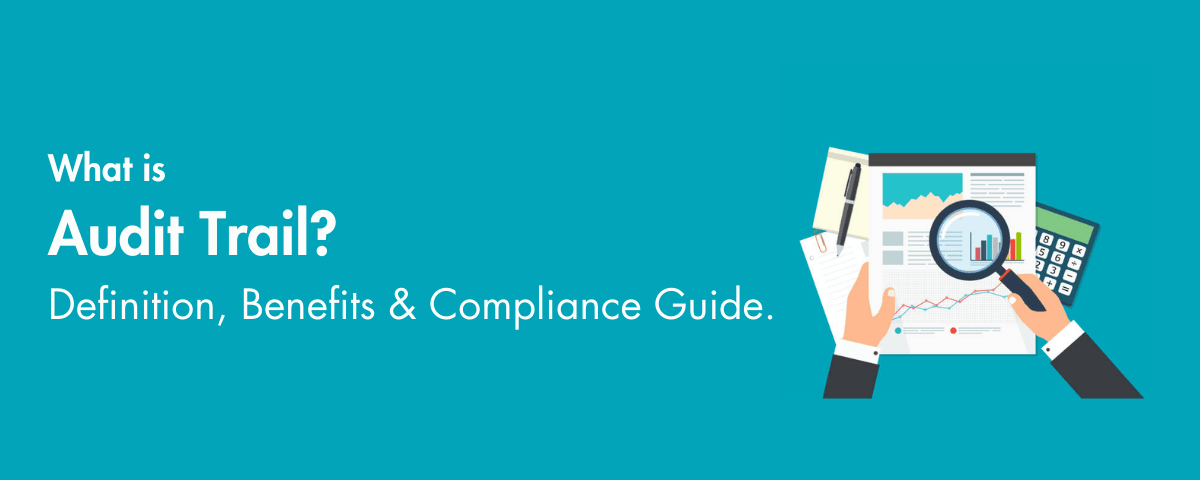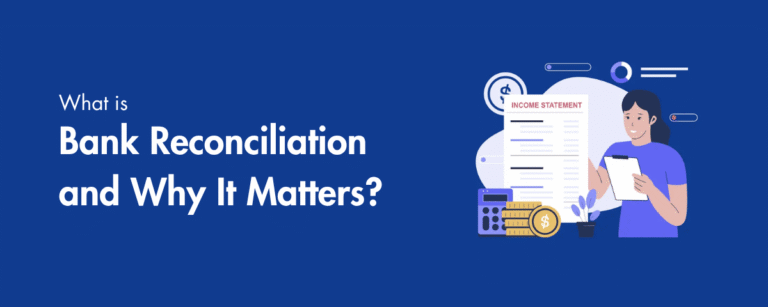A practical way to think about an audit trail: it is your system’s receipt for every important action, tied to a user, timestamp, origin, and outcome.
If you run a CPA, EA, or accounting firm, a solid trail is more than a compliance checkbox. It is how you prevent fraud, resolve disputes, speed audits, and prove control to clients, auditors, and regulators. HIPAA calls this audit controls, PCI DSS v4.0 makes logging and monitoring explicit under Requirement 10, the FDA’s Part 11 highlights audit trails for regulated records, and the SEC allows an audit trail alternative under Rule 17a‑4 for broker dealers that preserve complete, time stamped histories.
Table of Contents
Key Takeaways
- An audit trail is a chronological, time stamped record that shows who did what, when, from where, and the result.
- It supports accountability, event reconstruction, and forensic analysis by linking actions to users, systems, and transactions.
- Audit trails enable regulatory compliance across HIPAA, SOX, PCI DSS, FDA Part 11, and SEC 17a‑4 and provide defensible evidence in reviews or disputes. (law.cornell.edu)
- They reduce fraud and errors, speed incident response and root cause analysis, and can lower audit time and cost.
- Effective trails use structured logs, synchronized clocks, immutable or tamper evident storage, and strong access controls. ISO 27001:2022 also calls out logging, monitoring, and clock synchronization. (grclab.com)
What is an Audit Trail
An audit trail is a trustworthy, chronological record that captures who did what, when it happened, where it originated, and whether it succeeded or failed. In practice, that means each entry includes a precise timestamp, a unique user or service identity, the action taken, the source such as IP or terminal, the result, and often the before and after values for any change. NIST’s audit content guidance aligns closely with this list. (omb.report)
Short definition you can share with your team A time stamped record linking an action to a person or system with enough detail to reconstruct what happened and prove control.
Good trails span every important layer, including application, database, operating system, network, and business transactions. With this scope, you can trace a client ledger change from the UI, through the API, all the way to the database row write, then verify related configuration changes on the host.
To keep the record dependable, you retain logs in immutable or tamper evident storage, enforce role based access, and synchronize clocks across systems. PCI DSS v4.x requires time synchronization for accurate timestamps, and ISO 27001:2022 calls out both logging and clock synchronization explicitly. (riskcognizance.com)
Regulators and standards setters expect this level of rigor. HIPAA’s Security Rule requires audit controls for systems containing ePHI. FDA’s Part 11 recognizes audit trails as an appropriate control for regulated electronic records. The SEC’s amendments to Rule 17a‑4, effective January 3, 2023 with a compliance date of May 3, 2023, allow either WORM storage or a complete audit trail alternative that preserves time stamped histories sufficient to recreate records. (hhs.gov)
Why This Matters To Accounting Leaders
You live in a world of assertions and evidence. Under SOX, management must assess Internal Control over Financial Reporting, and auditors need sufficient, appropriate evidence. Well designed audit trails shorten that distance between assertion and proof. They help you support journal entry controls, segregation of duties, change approvals, and access reviews, all with a verifiable history instead of tribal memory. (pcaobus.org)
A note on 2025 updates
- PCI DSS v3.2.1 retired on March 31, 2024. Many v4.x items that were best practices shift to requirements after March 31, 2025, including automated log review. Plan now. (pcisecuritystandards.org)
- HIPAA modernization is underway. In January 2025 HHS issued a proposed rule to strengthen security practices, including MFA and faster vendor notifications. Final rules are pending review as of October 6, 2025, so keep an eye on updates. (reuters.com)
How Audit Trails Work
You can picture the flow in three stages. First, systems generate events that describe actions. Second, you centralize those events for correlation. Third, you secure the record so no one can quietly alter it later.
Core Logging Components
Every entry should cover the who, what, when, where, and outcome. When data changes, include before and after values or a diff. These fields map cleanly to well known logging controls, such as NIST SP 800‑53 AU‑3 on audit record content.
| Component | Why it matters | Example |
| Timestamp with timezone | Chronology and replay | 2025‑10‑06T14:33:10.174Z |
| User or service identity | Accountability | jdoe, svc‑etl‑01 |
| Action performed | Scope of change | approve_invoice, update_vendor_bank |
| Source, such as IP or terminal | Attribution and risk | 203.0.113.10, tty1 |
| Result and reason | Forensics and triage | success, policy check passed |
| Before and after values or diff | Integrity and reconciliation | amount 1,000.00 to 1,050.00 |
| Correlation or transaction ID | End to end traceability | txn‑a9c3‑77c5 |
| Object identifier | Rapid search and join | invoice_id 542113 |
NIST’s AU‑3 emphasizes recording event type, time, location, source, outcome, and associated identities. If your entries cover that set, you can usually reconstruct the story without guesswork.
Data Capture Flow
- Event generation happens at the app, OS, database, and network layers.
- Logging hooks capture timestamp, actor, origin, action, result, before and after values, and correlation IDs.
- Synchronize clocks on every component using authenticated NTP to preserve ordering. ISO 27001:2022 calls out clock synchronization in Annex A 8.17.
- Ship events securely to central collection or your SIEM in near real time. Normalize to JSON or a standard schema to simplify queries.
- Enrich with user, asset, and business context to improve detection and investigations.
- Store in immutable or tamper evident storage with role based access and signed integrity checks. For broker dealers, the SEC’s 17a‑4 permits either WORM or a complete audit trail alternative. (sec.gov)
Security And Controls
Think defense in depth. You want integrity, availability, and usability of the record.
- Integrity. Use append only or WORM storage, cryptographic hashing or signatures, and restricted administrative access. SEC 17a‑4’s audit trail alternative requires a complete, time stamped trail of modifications and deletions that supports recreation of the record.
- Availability. Allocate storage with headroom and offload to alternate storage on a schedule. NIST AU‑4 addresses storage capacity planning.
- Resilience. Detect and alert on logging failures, then follow a runbook. NIST AU‑5 covers alerts and actions when logging breaks. PCI DSS also expects you to detect, report, and respond to critical logging failures.
- Time accuracy. Synchronize clocks everywhere. PCI DSS v4.x requires time sync, and ISO 27001 flags it as a control. (riskcognizance.com)
- Review cadence. Daily automated reviews for key systems are expected under PCI DSS v4.x, with risk based periodic reviews for others.
Tools and standards to know
- NIST SP 800‑92 remains a foundational reference for log management, with a 2023 draft refresh focused on planning.
- NIST SP 800‑137 supports continuous monitoring, which helps you turn logs into ongoing assurance.
Primary Uses And Business Value
For many firms, the first win is faster audits. Under SOX Section 404, management’s assessment of ICFR and the auditor’s opinion rely on evidence. Audit trails give you repeatable, time stamped proof of who approved, who posted, and when preventive or detective controls executed. That reduces sampling headaches and supports a clean PCAOB‑compliant engagement. (pcaobus.org)
Beyond compliance, trails cut risk and cost:
- Fraud deterrence. Users behave better when they know actions are tied to their identity and reviewed. COSO’s 2023 Fraud Risk Management update encourages data driven monitoring as a deterrent. (theiia.org)
- Incident response. Correlated events reveal breach scope, affected accounts, and change history quickly, which limits downtime and reduces legal exposure.
- Operations. Root cause analysis goes faster when you can traverse API calls, config changes, and data edits with a single transaction ID.
- Client trust. Clear records reassure clients during disputes. It is easier to sustain long relationships when you can answer tough questions with facts, not hunches.
Expected Frameworks In Finance And Health
- HIPAA Security Rule. Requires audit controls for systems containing ePHI. If you serve healthcare clients or process ePHI, be ready to show policy, tooling, and review evidence. (hhs.gov)
- FDA 21 CFR Part 11. Emphasizes trustworthy electronic records and recognizes audit trails as a strong control for user created or modified records. (fda.gov)
- PCI DSS v4.x. Requirement 10 is explicit about logging content, daily reviews, retention for at least one year, and three months immediately available. This is often the most prescriptive set of expectations your team will see.
- SOC 2. Trust Services Criteria expect monitoring, logging, and timely detection. If your firm offers services to other companies and pursues SOC 2, expect logging to feature in design and testing. (aicpa.com)
- SEC Rule 17a‑4. Broker dealers may use either WORM storage or an audit trail alternative that preserves complete, time stamped histories. Confirm your vendor can meet either path. (sec.gov)
Types Of Audit Trails
- System trails. Operating system events such as logins, privilege escalations, and configuration changes with timestamps and source hosts.
- Application trails. User activity inside apps, including data entry, edits, approvals, deletions, and workflow steps, tied to user IDs, before and after values, and transaction IDs.
- Database trails. Queries, schema changes, and row level CRUD activity for least privilege and reconciliation.
- Network trails. Connection attempts, flows, firewall decisions, and packet metadata to spot intrusion or lateral movement.
- Transactional trails. End to end business transactions with parties, amounts, routing, modifications, and status, which your auditors will love.
Benefits Of Implementing Audit Trails
- Stronger controls. Tie actions to identities and enforce role based access. Immutable or tamper evident logs support non repudiation.
- Proof of compliance. Satisfy HIPAA, PCI DSS, and industry attestations with consistent evidence sets instead of bespoke screenshots.
- Faster response. Centralized, indexed logs cut investigations from days to hours, especially when you standardize schemas and use correlation IDs.
- Legal defensibility. Retain records long enough to satisfy your frameworks. PCI DSS calls for at least 12 months of audit log history with three months immediately available. Use that as a baseline even outside payments. (blog.rsisecurity.com)
Building And Maintaining An Effective Audit Trail
You do not have to boil the ocean. Start with the highest risk systems, then expand.
- Define your log fields. At minimum, capture user ID, timestamp with timezone, source IP or device, action type, success or failure, object ID, and before and after values for data changes. This aligns with NIST AU‑3
- Map compliance. Identify systems tied to financial reporting, card data, or ePHI and map to SOX, PCI DSS, and HIPAA. Build a simple matrix of systems, events, and retention.
- Enforce immutability. Choose WORM storage or a design that preserves a complete, time stamped audit trail. If you operate in markets regulated by the SEC, 17a‑4 explicitly permits either WORM or the audit trail alternative.
- Add cryptographic integrity. Hash logs in batches, sign them, and store the signatures separately.
- Centralize and normalize. Ship logs securely to a SIEM or log lake, use JSON, set field names, and keep a schema catalog.
- Synchronize time. Use authenticated time sources and monitor drift. PCI and ISO both expect this.
- Set retention tiers. Keep recent logs hot and searchable, then roll off to warm or cold storage. PCI DSS sets a clear bar of at least 12 months with three months immediately available.
- Monitor health. Alert when pipelines break, queues back up, or ingestion fails. NIST AU‑5 expects defined responses to logging failures.
- Review and tune. Automate daily reviews on key systems, then use targeted risk analysis to set review cadence for others under PCI DSS v4.x.
- Drill restores. Test that you can rehydrate archived logs and prove chain of custody.
Common Challenges And Practical Fixes
- Log volume. Tier your storage and downsample noisy sources. NIST AU‑4 encourages planning for capacity and offloading to alternate storage.
- Time drift. Enforce SLAs for drift and alert on variance. Pair with ISO 27001 Annex A 8.17 expectations. (grclab.com)
- Integrity gaps. Move to append only targets, attest hash chains on a schedule, and limit admin access. SEC 17a‑4’s audit trail alternative spells out what a complete trail must contain. (sec.gov)
- Review fatigue. Automate correlation and daily checks. PCI DSS v4.x expects automated mechanisms for log reviews on critical systems. (scribd.com)
A Quick Checklist For Accounting Teams
- Identify your crown jewels. Close books, cash disbursements, payroll, and revenue cycle systems.
- Confirm log fields match the table in this guide.
- Validate clock sync on every host and service.
- Route logs to your SIEM with encryption in transit and at rest.
- Turn on admin action logs and access logs.
- Enable database auditing for change and read events where feasible.
- Create daily automated reviews for high risk systems.
- Lock retention to your frameworks.
- Run a quarterly restore drill.
- Document policy and evidence so your next audit goes smoothly.
If resourcing is tight, consider assigning a small internal squad to define the standard and review exceptions, then delegate routine collection and first pass reviews. For firms that want operational consistency without expanding headcount, Accountably can support back office procedures that depend on clean audit trails, while your team retains control design and sign off. Mention it when it genuinely helps your workflow.
Frequently Asked Questions
What do you mean by audit trail?
It is a monitored record that captures access, change history, and event timestamps across key systems. The goal is to guarantee accountability and enable forensics. HIPAA calls this audit controls for systems with ePHI, and NIST spells out what an audit record should include. (hhs.gov)
What is displayed in an audit trail?
Expect user actions, authentication events, change history, error messages, ordered timestamps, IP addresses or terminals, transaction or correlation IDs, object identifiers, and success or failure. PCI DSS v4.x details core elements that need to be present in the log record. (blog.rsisecurity.com)
What is a trial audit?
Think of it as a preliminary, risk focused review. You define scope, gather evidence, verify outcomes, and test whether policies and procedures are followed before a full assessment or attestation. It reduces surprises and helps budget time for remediation.
What is the audit trail of a computer?
At the system level, it is a chronological record of logins, access attempts, privilege escalations, file integrity and configuration changes, process starts, errors, and service events. Pair this with application, database, network, and transaction logs for end to end coverage. NIST’s AU family of controls provides a helpful checklist.
What‑How‑Wow Summary
- What. An audit trail is a reliable, time stamped record of actions that lets you reconstruct events and prove control.
- How. Capture the right fields, centralize and normalize logs, synchronize time, secure storage with integrity checks, and automate reviews.
- Wow. Use transaction IDs, before and after values, and immutable storage so your next audit or incident response moves in hours, not days. SEC’s 17a‑4 audit trail alternative and PCI DSS v4.x show where regulators are headed, which aligns with what makes your team effective anyway. (sec.gov)
Final Thoughts
If you take only one action after reading this, pick one high risk system and make its audit trail exemplary this month. Standardize fields. Fix time sync. Turn on admin action logging. Send it to your SIEM. Write a simple playbook for daily review and logging failures. You will feel the difference the next time a client asks, Who changed this and when.
If you lead a CPA, EA, or accounting firm and need help with back office execution that depends on consistent audit trails, Accountably can support routine workflows and documentation while your partners keep control design, approvals, and sign off. It is a simple way to protect quality without slowing the team.








